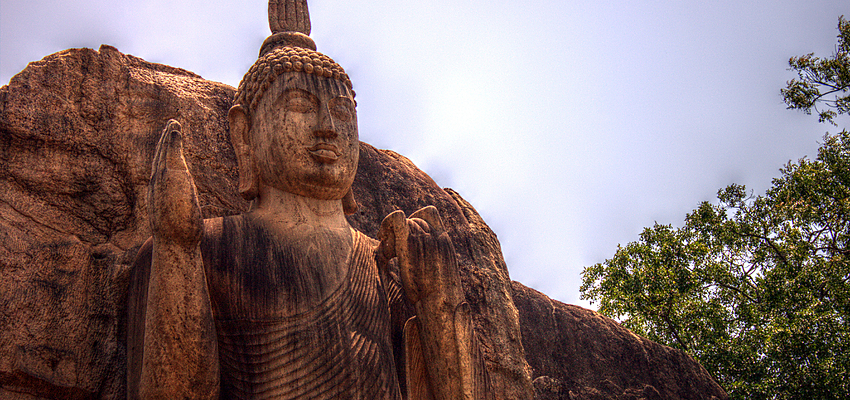


Having been a democratic socialist republic since 1977, Sri Lanka is the location for one of the most violent inter-community conflicts in the world: between the Sinhalese and the Tamils.
The first Sinhalese arrived from northern India in the 5th century BC and took the place of the Veddha, an aboriginal people that has now disappeared. Buddhism came to the island a century later during the expansion of the Sinhalese kingdom of Anuradhapura. Later on, Polonnaruwa became the country's capital. In 1505, the country was invaded: the Portuguese landed at Colombo and rapidly conquered the entire island except the mountainous region of Kandy. In 1658, it was the turn of the Dutch to colonise the island after chasing the Portuguese away. Then in 1802, Ceylon (a great place to stop when touring this part of the world) became a British colony, but the island was only given the status of independent dominion within the British Commonwealth in 1948. The first independent government was led by the UNP (United National Party). In 1971, a state of emergency was imposed on the Tamil territory. The Tamils were and are victims of discrimination and were claiming an independent state, Eelam… It was the start of a long conflict between the Sinhalese and Tamil communities which still continues today.
In 1960, Sirimavo Bandaranaike became the world's first female Prime Minister when the SLFP (Sri Lanka Freedom Party) came to power. In the years that followed, the SLFP and UNP alternated as governments of the country. In 1971, a huge wave of violence swept over with the insurrection of an extremist movement led by the People's Liberation Front. On 7 September 1977, Sri Lanka became a democratic socialist republic. The ambiguities of the policies enforced by the Sinhalese authorities with regard to the Tamil community brought about increased violence from 1983. The new president of the UNP tried to resolve the problem from 1988 but the truce was short-lived and the conflict began again in earnest.

In 2004, a tsunami wiped out much of the country leaving 30,000 dead and many homeless. The conflict between the LTTE (Liberation Tigers of Tamil Eelam) and government forces once again flared up after the assassination of the Foreign Minister in 2005. President Rajapakse then launched negotiations with representatives of the Tamil minority. The conflict ended in 2009 after a big offensive by the army. The heavy toll of this civil war in Sri-Lanka was 70,000 dead. Relations between the two communities remain complex, particularly when human rights bodies warned of a slide towards dictatorship following the re-election of Mahinda Rajapakse in 2010… In January 2011, a United Nations report shed light on possible war crimes committed by the Sri Lankan army on the Tamil population. Violence between the two communities is still raging today. Sri Lanka is a country that's full of history.